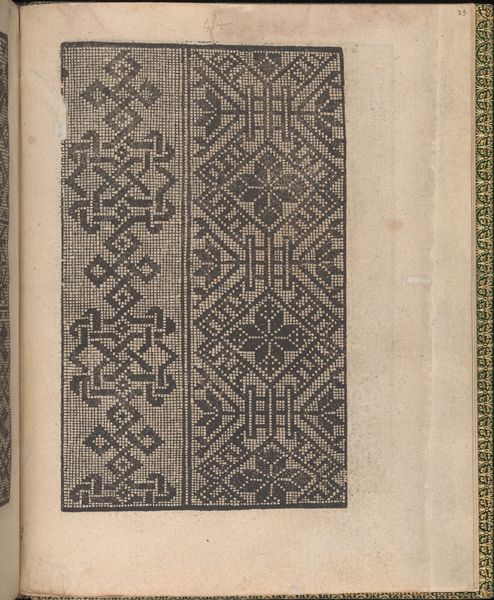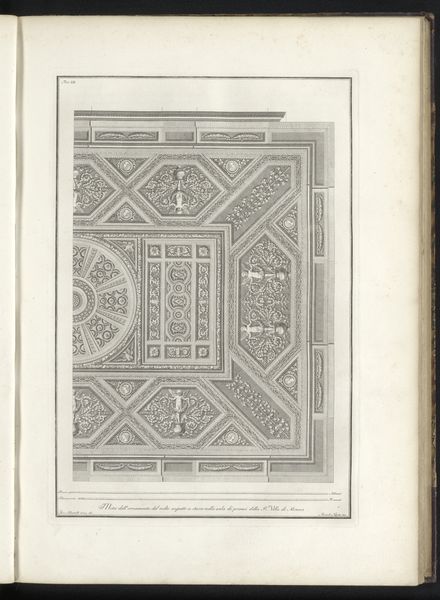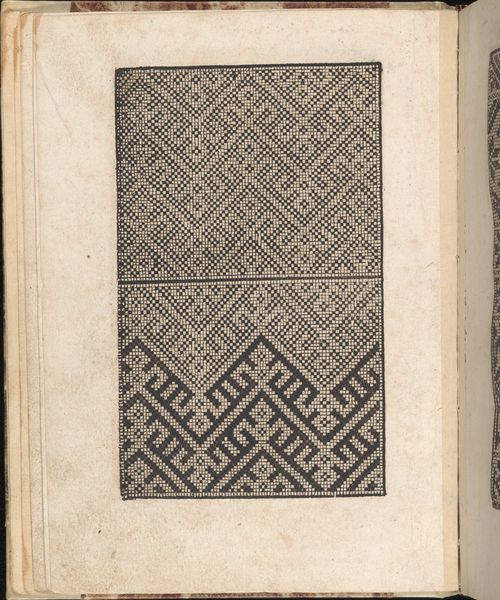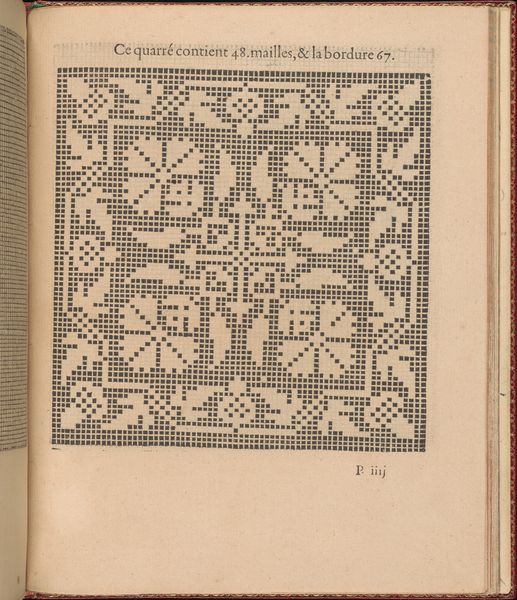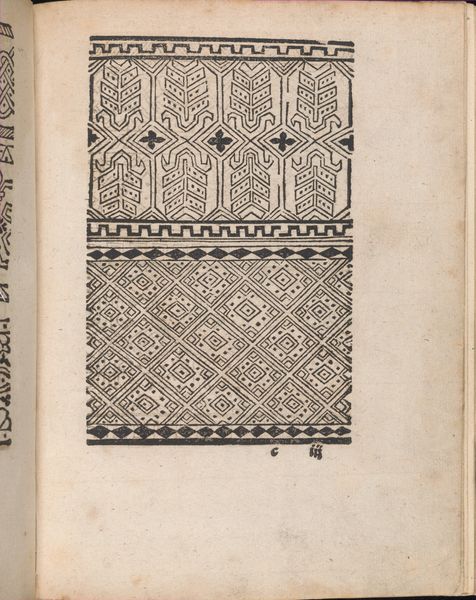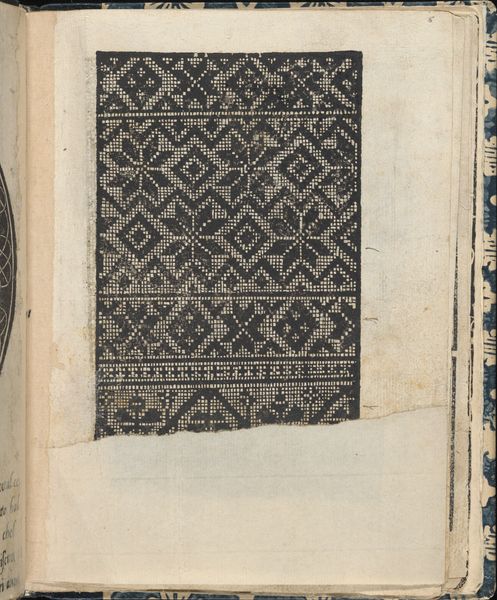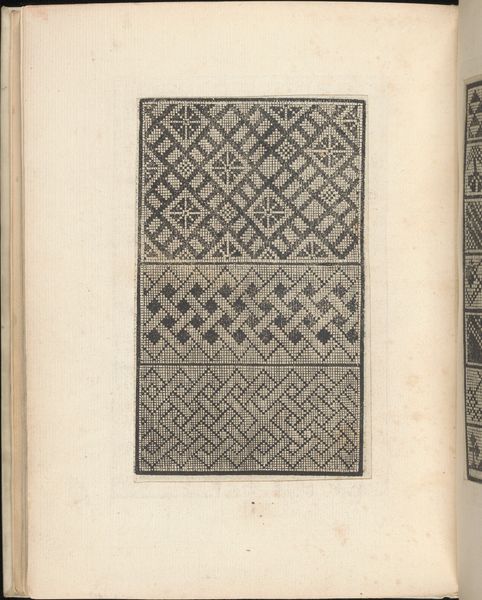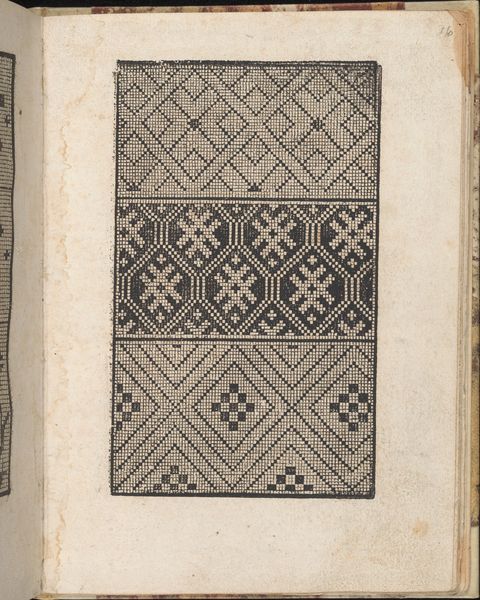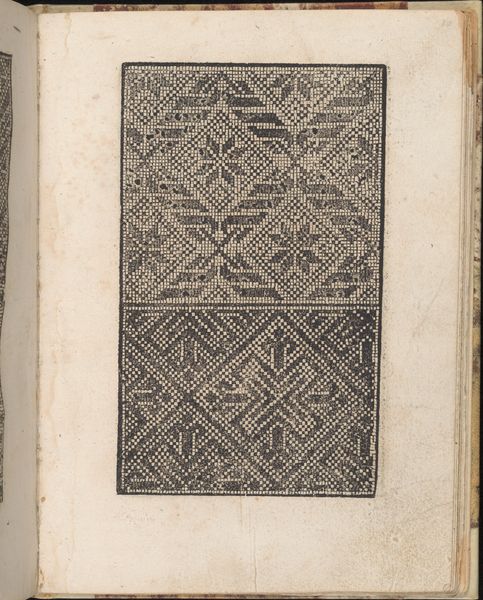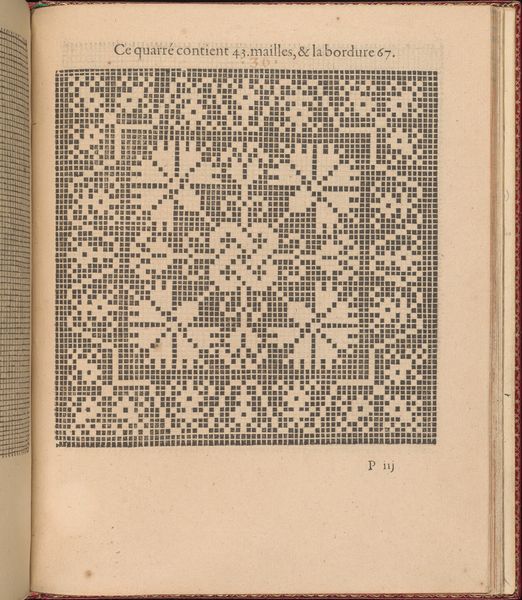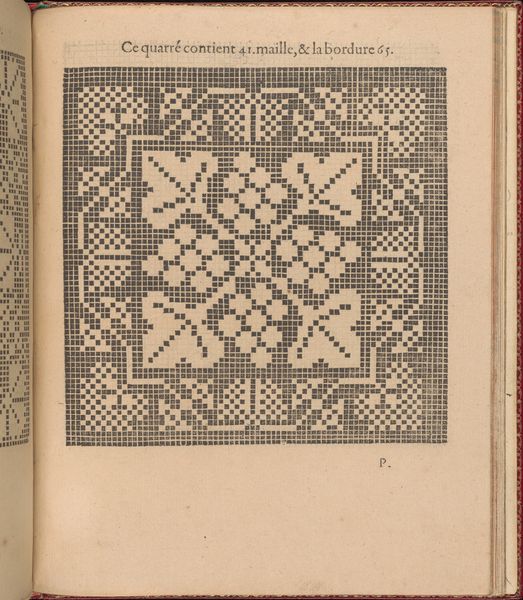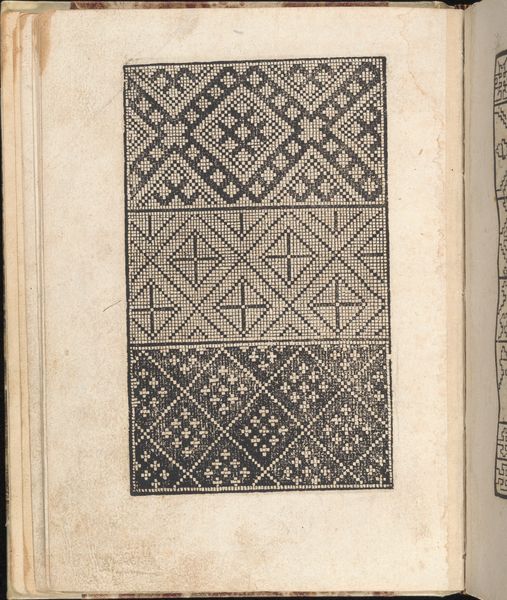
Design for Lobby Ceiling after Piranesi, Chamber Story, Castlecoole, County Fermanagh, Ireland 1785 - 1802
0:00
0:00
drawing, print, watercolor, architecture
#
drawing
#
neoclacissism
# print
#
watercolor
#
geometric
#
history-painting
#
decorative-art
#
watercolor
#
architecture
Dimensions: sheet: 20 1/4 x 14 3/16 in. (51.5 x 36 cm)
Copyright: Public Domain
Curator: Here we have James Wyatt’s "Design for Lobby Ceiling after Piranesi, Chamber Story, Castlecoole, County Fermanagh, Ireland", likely created between 1785 and 1802. It’s currently held at the Metropolitan Museum of Art. My initial reaction is its intricacy and formality, even in its incomplete state—one corner is torn away, rather jarring against the overall regularity of the grid. Editor: That missing corner only emphasizes the fragment as a representation, rather than the thing itself. The washed out earth tones and rigid geometry seem like a very sterile, academic exercise in power. I can't imagine that welcoming wealthy land-owners to County Fermanagh in Ireland. Curator: It is fascinating how you interpret such opposing senses of absence and wealth from the same washes of pigment, all laid atop printed design and delicate lines. What do you focus on within the work? I would assume its status within a narrative of Anglo-Irish aristocratic self-representation. Editor: Of course, it seems Wyatt, clearly enthralled by Piranesi, intends the ceiling for the enjoyment of a privileged elite, one embedded with neoclassical symbolism—those mythological or historical narratives are purposefully meant to signal refinement and legitimize their place within an often violently acquired estate. Curator: It’s impossible to ignore Wyatt's debt to neoclassicism, he’s borrowing from Piranesi but there's also this dilution into decorative art. Those precise, repeatable patterns create a clear hierarchy, reinforcing an elevated space within the home and its association with intellect. Look at the octagonal centerpiece and rectangular side-panels depicting these elegant classical forms, with a geometric cross-hatched border. Editor: Do you think this order tries to naturalize colonial hierarchies that the Anglo-Irish installed throughout Ireland and beyond? I mean, who is invited to look upwards, and from where are they viewing it? And how might this visual order contribute to more hidden social order. The rigidity almost seems aggressive. Curator: While one could easily deconstruct the patterns within its design, its visual appearance offers complexity. The work itself presents its formal qualities through composition and architectural design while inviting questions that expose the complex layers it is rooted within. Editor: It becomes an interesting collision of structure, doesn't it? A physical attempt to contain both space and the narrative of ownership it imposes, where history and aesthetics become powerful components of something much more intricate.
Comments
No comments
Be the first to comment and join the conversation on the ultimate creative platform.


